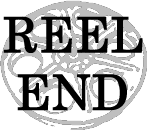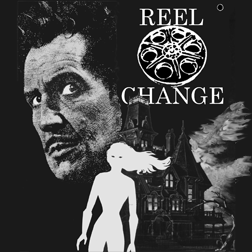 |
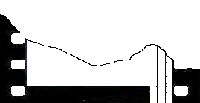 |
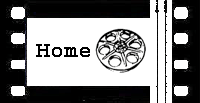 |
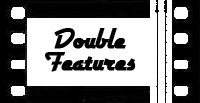 |
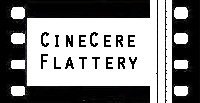 |
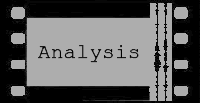 |
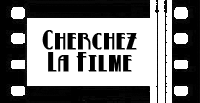 |
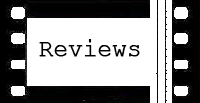 |
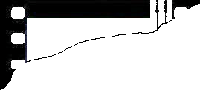 |

The Last Man on Earth is Not Alone
The Road Warrior
In the future, cities will become deserts, roads will become battlefields
and the hope of mankind will appear as a stranger
In 1979 George Miller wrote and directed Mad Max, a film that found box office success in every country but the United States. Mad Max is an Apocalypse story, taking place during the breakdown of society following a war between "two mighty warrior tribes," the result of which was the destruction of virtually all of the world's oil supply. Anarchy threatens in Mad Max, but Max Rockatansky and his fellow highway cops or "bronzes" work to prevent the forces of "terminal crazies" from taking control on the highways that signify the old civilization. During the course of this struggle The Toe-Cutter and his gang kill Max's best friend, wife, and child. Enraged, Max abandons his bronze loyalties to become an avenging vigilante and wipes out the Toe-Cutter and his followers. At the end of the film Max banishes himself to The Wasteland behind the wheel of his Bronze V-8 Interceptor.
With the box office success of Mad Max, Miller continued the story of Max in the sequel titled Mad Max 2 in all countries except America, where the original's lack of success led to the new title The Road Warrior. Years have gone by since the end of Mad Max; the prologue describes Max's past and the total breakdown of society, before introducing the new scenario. Max still wanders the Wasteland, scavenging for "the juice" - gasoline, the most valuable resource left. He finds a group of Civilized encamped in the Oasis of an abandoned refinery, where they have access to a great deal of gasoline. They are under siege by Lord Humungus and his Deviant gang. Max shifts from mercenary to savior, regaining his humanity in the process of delivering the Civilized from the Wasteland to their Sanctuary at Paradise Beach.
When it began in the late
1970s, the Mad Max trilogy was heavily inspired by the energy crisis
that had struck the world earlier in the decade. By 1979 it was no longer
an active crisis, but the ecological concerns it had raised were still
fresh on the minds of the public. Specifically, the shortage of gasoline
increased awareness of the world's dependence on a limited supply of fossil
fuels. He who has the gas, makes the rules, and the influence of the Organization
of Petroleum Exporting Countries increased greatly during the '70s. In
order to show its power, OPEC put an embargo on oil sold to many Western
countries, creating the shortage that influenced the world of the Mad
Max trilogy. This world's society is ordered around cars and highways.
Gasoline is a universally valuable commodity, but Barbarians and Bronzes
also prize the powerful, gas-guzzling vehicles that ruled the roads before
the crisis forced the public to value a vehicle's gas mileage over its
muscle. Max is bribed to stay on the force with access to drive "the
last of the great V-8s." As in the world of the Western, where a
man's skill with a gun defines him, in the oil crisis-inspired world of
Mad Max, a man's nerve and skills behind the wheel make him the
man he is. At the beginning of Mad Max, Max is able to outnerve
the Night Rider, Toe-Cutter's predecessor, proving himself to be the best
driver on the highway. For men who are in this way defined by their vehicles,
the highway is their natural habitat. It is where they make a living,
settle disputes, and prove their strength. It is the only part of civilization
of interest to the Deviant gangs that battle for its control. Otherwise
the Deviants are anarchists, consciously against the Civilized.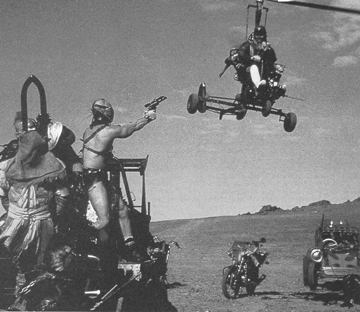
With this car-centric culture the scarcity of gasoline creates an environment in which "onlythose mobile enough to scavenge, brutal enough to pillage, would survive." Without gasoline the all-important vehicles will not run. The Road Warrior's prologue states, "Without fuel they were nothing. They'd built a house of straw. The thundering machines sputtered and stopped." The small pieces of real-life anarchy, glimpsed in long gas station lines, rationing, and sky rocketing prices, are taken to the ultimate level in the The Road Warrior, where one must soak up spilt gasoline with a rag and wring it out into the tank just to keep a vehicle moving. This heightened demand for gasoline leads to the conflict between the Civilized forces encamped in the refinery and the scavenging Deviants of Lord Humungus and his followers. Lord Humungus claims to want simply the gasoline and says he will let the Civilized go if they leave it for him. This seems to make Lord Humungus more of a Cult leader than a Deviant, but the lack of control that he has over his gang shows the anarchy that signals the Deviants.
In this Oil Crisis Post-Apocalypse the destroyed city of the Urban Wasteland is the refinery itself. The Feral Kid's prologue refers to "a time when the world was powered by the black fuel, and deserts spouted great cities of pipe and steel." These cities are the refineries that brought the "black fuel" to the rest of civilization. In a car-centric and therefore gas-centric culture, the place the Civilized first seek refuge is not the abandoned cities as in the previous entries in the genre, but rather behind the walls of the refinery that can still process the "precious juice." The Civilized have so much gasoline that they use it even in flame-throwers for defense against the Deviants. This affluence naturally attracts the Deviants to the refinery. Although the Civilized also keep livestock in the compound, presumably to eat, the only resources that the Deviants show interest in are gasoline and women.
The Civilized have reordered their society in a Puritanical, non-sexual way. There are only two instances of a personal relationship between specific characters, one of which is a father-daughter relationship between Curmudgeon and the Gyro Captain's girl. The other is only exhibited through The Quiet Man's distress at the news from Max that the Deviants killed a Civilized girl attempting to escape. While still rebuilding, the Civilized do not have the time or energy for the luxury of interpersonal relationships. For the Civilized, the community's needs takes precedence over an individual's desires. This is not so for the Deviants. Within Lord Humungus' gang there are many explicit and implicit couplings. Wez rides his motorcycle with the Golden Youth chained to him by a leash. When the Feral Kid kills the Golden Youth, Wez becomes even more unhinged that he was before. As Max tears through the Deviants' encampment the wind shear from his truck rips a tarp away to reveal a copulating couple. Not only are there couples among the Deviants, but unbridled sexuality is also shown when the Deviants fall upon a Civilized woman who has left the compound to look for a rig to haul the tanker. The Deviants gang rape her before killing her outright. For Deviants there is nothing more important than personal desires being fulfilled.
The Civilized lack couples because they are not yet ready to repopulate. With the very limited resources of this Post-Apocalyptic world and the population explosion concerns of the 1970s, George Miller creates a rebuilding society that will not stand for the free love of the 1960s. Because of their aversion to the possibility of unplanned pregnancies, the Civilized live non-sexualized lives until they can live in peace and safety. Curmudgeon tells Max of the Sanctuary of Paradise Beach. He shows postcard pictures of white beaches and beautiful women, telling Max there is "fresh water, plenty of sunshine, nothing to do but breed." The Civilized have put off their sexual and procreative desires until they live in a situation in which they can properly raise the next generation.
The Civilized's non-sexual
society goes against the Deviants' hypersexual ways. The Deviants do not
care what is best for the future of society and are not concerned with
any possible offspring from a recreational sexual encounter. The copulating
couple seen as Max drives the rig through the Deviants emcampment can
only be engaging in sex for their own enjoyment, rather than the community-minded
purpose of procreation. Even if they are attempting to reproduce without
the means or the resources to properly raise their child, they are still
contradicting the morals of the population-concerned Civilized. Wez and
the Golden Youth's relationship also goes against these edicts, as their
homosexual relationship can only be for personal or emotional pleasure
rather than the pragmatic approach to relationships that the Civilized
have taken.
Lord Humungus and his gang are specifically portrayed as sexual deviants
from the norm of 1981. Besides Wez and the Golden Youth, many of Humungus'
other followers are either directly referred to or coded as being gay.
One member of the gang drives a pink Cadillac and wears a pink jumpsuit,
helmet, and beard. When Max watches the refinery from above, waiting for
a way in, Humungus can be heard calling one group of his minions the "Gayboy
Berserkers." Homosexuality is not the only sexual deviation that
Humungus' men exhibit, however. They savagely gang rape a woman and many
wear the black leather gear that is usually associated with those involved
in bondage and S&M, sexual deviations practiced by some members of
all orientations. Wez keeps the Golden Youth on a chain leash connected
to his collar; Humungus later uses it on Wez when he becomes unpredictable
after his partner's death. This should not be seen as homophobia on the
part of the Civilized but simply a fear of all things carnal.
The Civilized attempt to be as unsexual as possible. Their women are tough and masculine. The Mechanic is crippled from the waist down and his assistant, although large and strong, acts effeminate and childlike. Curmudgeon is the only one with sexual matters on his mind and seems most interested in the breeding that will go on at Paradise Beach. He attempts to pawn his daughter off on the Gyro Captain, an outsider who has shown sexual interest in her. Except for the dark military dress of Curmudgeon, the rest of the Civilized wear white clothing that reveals no skin below the neck, despite the desert heat. This is in stark contrast to the revealing black leather outfits of the Deviants that wait outside the walls of the refinery. Both in behavior and in dress the Deviants are highly sexualized, while the Civilized both act and appear chaste.
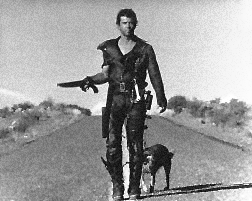 Between
these two groups stand two characters that strike the balance of the hero,
Max and the Feral Kid. As only two characters who can survive both in
the refinery and the wasteland, Max and the Feral Kid exist outside of
both the Civilized and the Deviants. Any member of the Civilized attempting
to escape the compound is captured and killed by the Deviants; whenever
a Deviant gets past the walls of the refinery he is either driven out
immediately or killed. With his skills behind the wheel and iron nerve,
Max has been scavenging in the Wasteland for some time before the Gyro
Captain leads him to the refinery. He waits for his chance to bargain
his way into the refinery by rescuing a captured scout, and is able to
barter his skills for the gas that he desperately needs. He moves freely
from the inside to the outside of the refinery meeting only limited resistance
from either side. Likewise the Feral Kid is able to shuttle from one world
to the other with ease. He has a series of tunnels that he uses to move
freely from the inside to the outside. The Civilized do protect and care
for him, but he has the skills to hold his own against the Deviants, even
killing the Golden Youth and severing Toadie's fingers with his razor-edged
boomerang.
Between
these two groups stand two characters that strike the balance of the hero,
Max and the Feral Kid. As only two characters who can survive both in
the refinery and the wasteland, Max and the Feral Kid exist outside of
both the Civilized and the Deviants. Any member of the Civilized attempting
to escape the compound is captured and killed by the Deviants; whenever
a Deviant gets past the walls of the refinery he is either driven out
immediately or killed. With his skills behind the wheel and iron nerve,
Max has been scavenging in the Wasteland for some time before the Gyro
Captain leads him to the refinery. He waits for his chance to bargain
his way into the refinery by rescuing a captured scout, and is able to
barter his skills for the gas that he desperately needs. He moves freely
from the inside to the outside of the refinery meeting only limited resistance
from either side. Likewise the Feral Kid is able to shuttle from one world
to the other with ease. He has a series of tunnels that he uses to move
freely from the inside to the outside. The Civilized do protect and care
for him, but he has the skills to hold his own against the Deviants, even
killing the Golden Youth and severing Toadie's fingers with his razor-edged
boomerang. 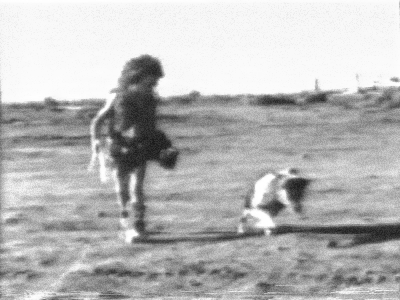 Max
wears the remains of his Bronze leathers, and they do cover his flesh
like one of the Civilized, but are made of the black leather that marks
most of the Deviants. The Feral Kid's animal skins barely cover him, setting
him apart from the Civilized even more. Even visually Max's streaks of
gray off of his left temple mirror the matching shock of blonde on the
right of the Feral Kid's otherwise brown mane. The Feral Kid takes to
Max immediately and tries to convince Max to take him along on more than
one occasion. When Max returns with the rig, a shot of Max's dog also
shows the Feral Kid falling right into step behind Max trying to literally
walk in his footsteps. The Feral Kid is as much of a individual as Max
and only joins the Civilized on their trek to Paradise Beach because,
for all his fierceness he is still a child and is able to be taken along
without a choice. This strength above all others is what will lead the
Feral Kid to become the leader of the "Great Northern Tribe"
as he is while his life fades and he tells the story of The Road Warrior.
Max
wears the remains of his Bronze leathers, and they do cover his flesh
like one of the Civilized, but are made of the black leather that marks
most of the Deviants. The Feral Kid's animal skins barely cover him, setting
him apart from the Civilized even more. Even visually Max's streaks of
gray off of his left temple mirror the matching shock of blonde on the
right of the Feral Kid's otherwise brown mane. The Feral Kid takes to
Max immediately and tries to convince Max to take him along on more than
one occasion. When Max returns with the rig, a shot of Max's dog also
shows the Feral Kid falling right into step behind Max trying to literally
walk in his footsteps. The Feral Kid is as much of a individual as Max
and only joins the Civilized on their trek to Paradise Beach because,
for all his fierceness he is still a child and is able to be taken along
without a choice. This strength above all others is what will lead the
Feral Kid to become the leader of the "Great Northern Tribe"
as he is while his life fades and he tells the story of The Road Warrior.
Max goes on in Mad Max Beyond Thunderdome to rescue yet another marooned tribe, this time made entirely of children, and once again shepherd the hope for the future to Sanctuary, while Aunty Entity's Bartertown-dwelling Cult stagnates in their methane powered Oasis. The numerous action sequences of The Omega Man are stretched out, to the point that The Road Warrior almost feels like one action sequence that occasionally slows to catch its breath with some characterizations. While all of the Mad Max films spring from ecological concerns, they are not overtly conservation films. Miller is much more concerned with the universal Hero myths outlined by Joseph Campbell. Even so, the future Miller creates is as much a product of the time from which it was created as it is an attempt to create a different time.
The genre continues to this day with at least one entry per year since its heyday of the early 80s. The power of the Post-Apocalyptic Action Film and its conventions remain firm even when the genre is grafted to another genre with an equal or greater history. Blood of Heroes (1990) follows most of the conventions of the Post-Apocalyptic Action Film, filling in the gaps with the formula of Underdog Sports pictures like Rocky (1976) and Hoosiers (1986). Dead Man Walking (1987) takes the genre's relation to the Western even further to the point that it is practically a remake of The Searchers. 1998's Six-String Samurai recognizes the genre's Cold War roots and plays a "What If . . ." scenario that has the Russians bombing the U.S. in 1957. While this may be one way to keep the genre alive now that the threat of nuclear holocaust lacks the immediacy it once had, The Matrix (1999) comes from a fear of computers. This fear may be even more relevant to the public of today than even The Bomb to the audience of the past, as the computers that will lead to mankind's enslavement in The Matrix are already almost insidiously integrated into daily life.
As long as mankind has enough technology to threaten its very existence, and as long as mankind continues to show its Barbarian side enough to give that threat some credence, then the Post-Apocalyptic Action Film will remain. It will remain to illustrate contemporary fears of the present and of the future with the genre's "reduced elemental levels." Just as films have always told and retold America's Genesis Myth of the Western, The Post-Apocalyptic Action Film will remain to tell the story of the inevitable conclusion of all the American Myths.
